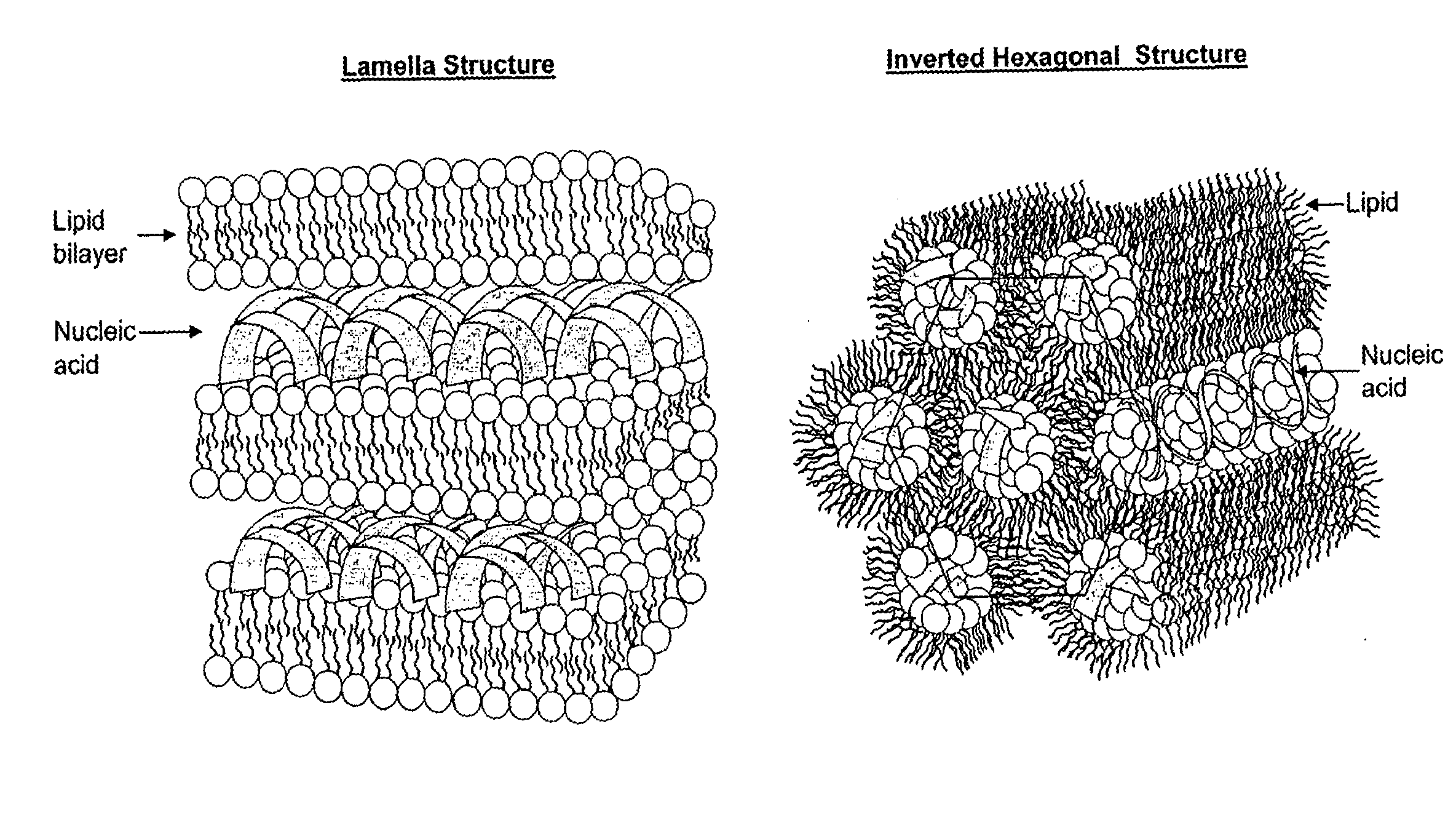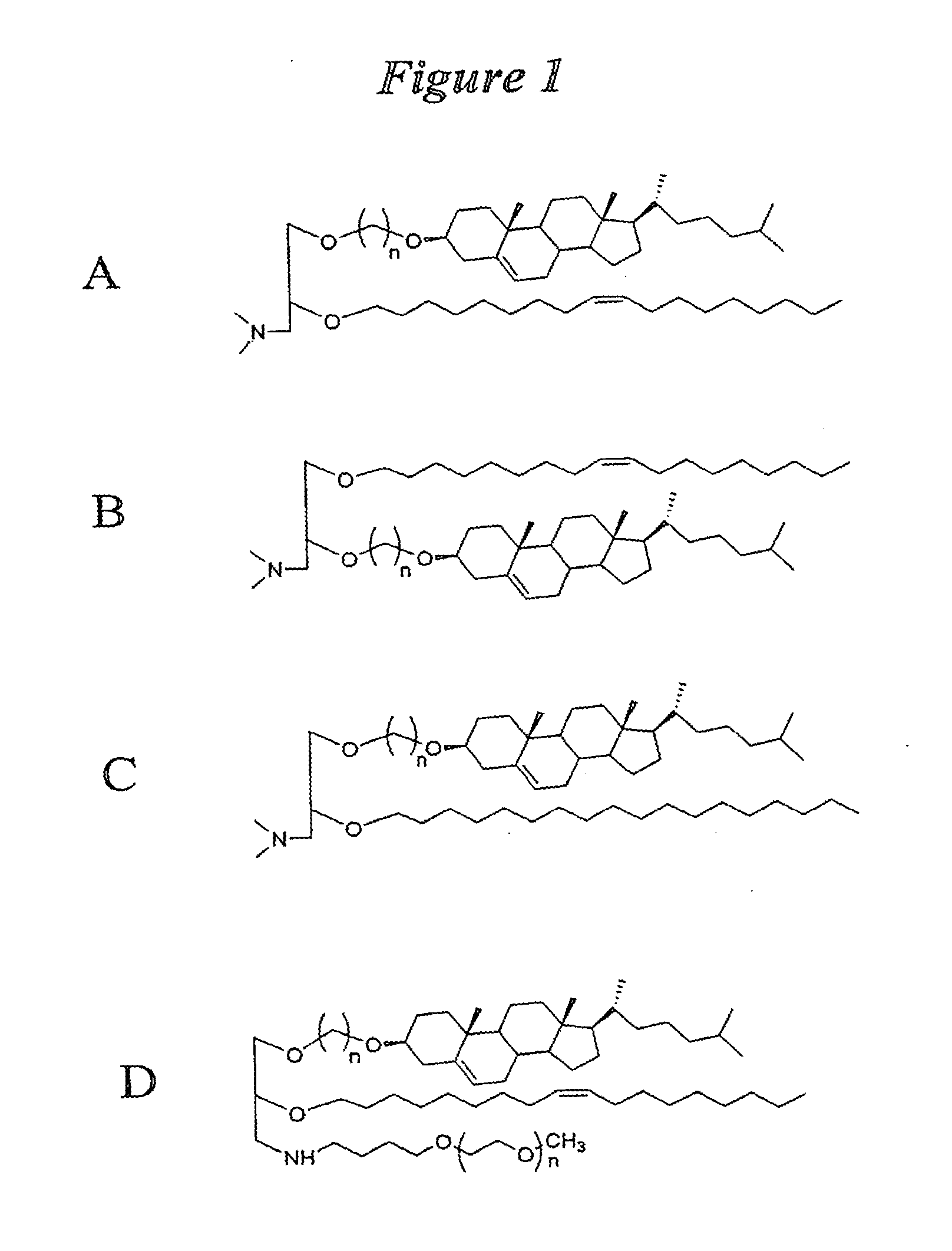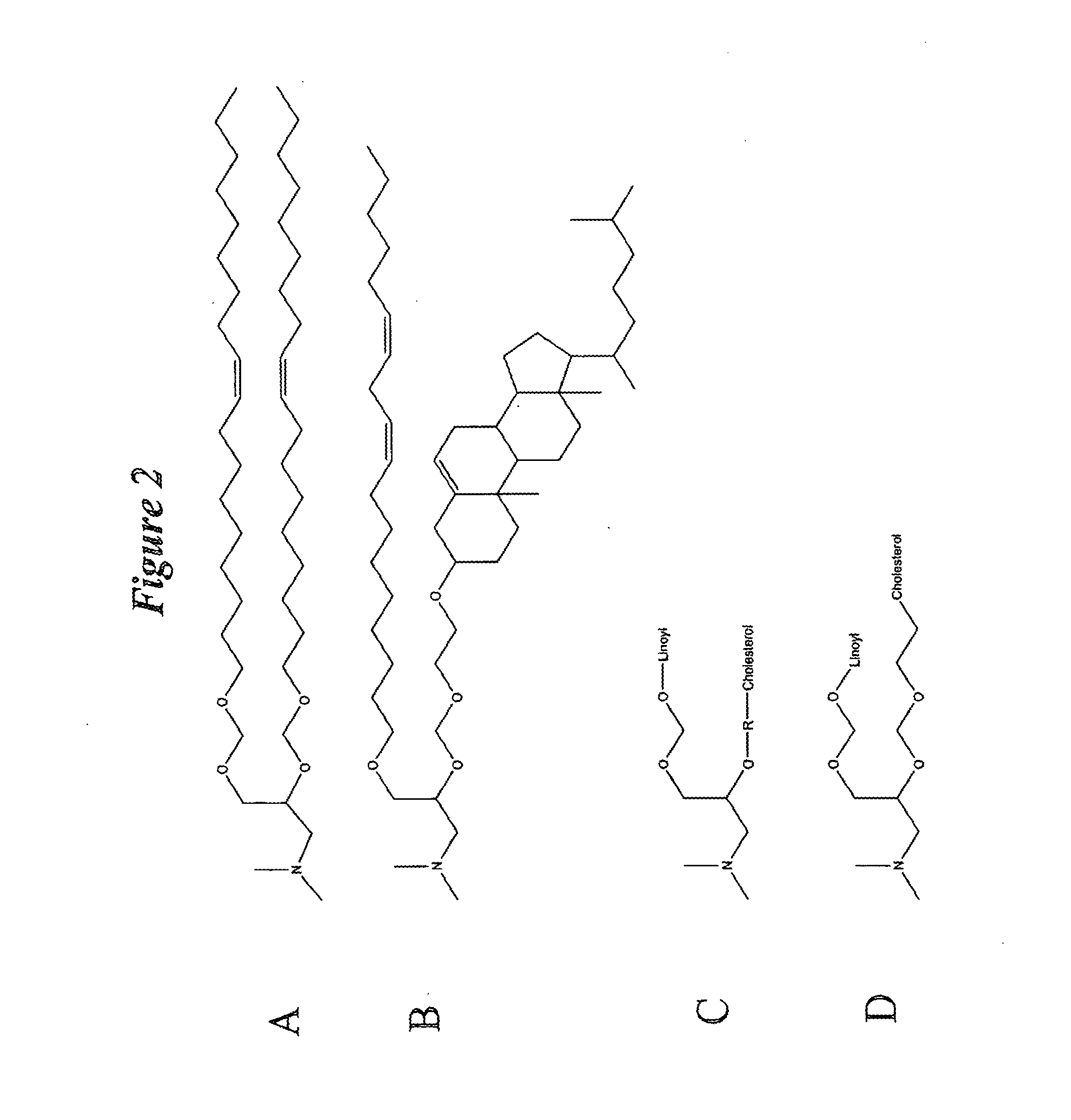Lipid nanoparticle based compositions and methods for the delivery of biologically active molecules
a technology compositions, applied in the field of new particle forming delivery agents, can solve the problems of high toxicity to normal tissues, high trafficking of many compounds into living cells, and inability to meet the needs of patients, so as to improve the efficiency of systemic and local delivery and increase the efficiency of biologically active molecules
- Summary
- Abstract
- Description
- Claims
- Application Information
AI Technical Summary
Benefits of technology
Problems solved by technology
Method used
Image
Examples
example 1
Identification of Potential siNA Target Sites in any RNA Sequence
[0561]The sequence of an RNA target of interest, such as a viral or human mRNA transcript, is screened for target sites, for example by using a computer folding algorithm. In a non-limiting example, the sequence of a gene or RNA gene transcript derived from a database, such as Genbank, is used to generate siNA targets having complementarity to the target. Such sequences can be obtained from a database, or can be determined experimentally as known in the art. Target sites that are known, for example, those target sites determined to be effective target sites based on studies with other nucleic acid molecules, for example ribozymes or antisense, or those targets known to be associated with a disease or condition such as those sites containing mutations or deletions, can be used to design siNA molecules targeting those sites. Various parameters can be used to determine which sites are the most suitable target sites within...
example 2
Selection of siNA Molecule Target Sites in a RNA
[0562]The following non-limiting steps can be used to carry out the selection of siNAs targeting a given gene sequence or transcript.[0563]1. The target sequence is parsed in silico into a list of all fragments or subsequences of a particular length, for example 23 nucleotide fragments, contained within the target sequence. This step is typically carried out using a custom Perl script, but commercial sequence analysis programs such as Oligo, MacVector, or the GCG Wisconsin Package can be employed as well.[0564]2. In some instances the siNAs correspond to more than one target sequence; such would be the case for example in targeting different transcripts of the same gene, targeting different transcripts of more than one gene, or for targeting both the human gene and an animal homolog. In this case, a subsequence list of a particular length is generated for each of the targets, and then the lists are compared to find matching sequences i...
example 3
siNA Design
[0573]siNA target sites were chosen by analyzing sequences of the target RNA target and optionally prioritizing the target sites on the basis of folding (structure of any given sequence analyzed to determine siNA accessibility to the target), by using a library of siNA molecules, or alternately by using an in vitro siNA system as described herein. siNA molecules are designed that could bind each target and are optionally individually analyzed by computer folding to assess whether the siNA molecule can interact with the target sequence. Varying the length of the siNA molecules can be chosen to optimize activity. Generally, a sufficient number of complementary nucleotide bases are chosen to bind to, or otherwise interact with, the target RNA, but the degree of complementarity can be modulated to accommodate siNA duplexes or varying length or base composition. By using such methodologies, siNA molecules can be designed to target sites within any known RNA sequence, for examp...
PUM
| Property | Measurement | Unit |
|---|---|---|
| pH | aaaaa | aaaaa |
| pH | aaaaa | aaaaa |
| size | aaaaa | aaaaa |
Abstract
Description
Claims
Application Information
 Login to View More
Login to View More - R&D
- Intellectual Property
- Life Sciences
- Materials
- Tech Scout
- Unparalleled Data Quality
- Higher Quality Content
- 60% Fewer Hallucinations
Browse by: Latest US Patents, China's latest patents, Technical Efficacy Thesaurus, Application Domain, Technology Topic, Popular Technical Reports.
© 2025 PatSnap. All rights reserved.Legal|Privacy policy|Modern Slavery Act Transparency Statement|Sitemap|About US| Contact US: help@patsnap.com



